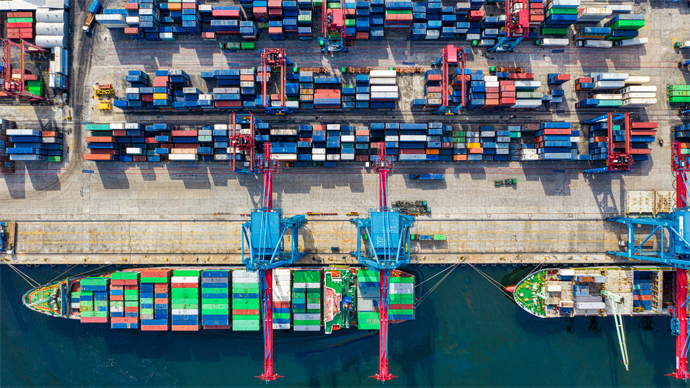Third Party vs. Fourth Party Logistics Differences
← Back
With the development and growth of trade networks, different models in logistics began to develop. The operations that started with the 1PL model have evolved into third-party logistics, fourth-party logistics and fifth-party logistics models over time. Currently, third-party logistics and fourth-party logistics models are among the most used models.
With the development and growth of trade networks, different models in logistics began to develop. Operations that started with the 1PL model evolved into third-party logistics, fourth-party logistics, and fifth-party logistics models over time. Currently, third-party logistics and fourth-party logistics models are among the most used models. So what is this 3PL and 4PL, what are the differences between them? What services do they offer and which type is best suited for your company?
Firms decide which logistics model to apply based on their own dynamics. For this reason, they should have a good grasp of these models and clearly understand the differences between them. They cover not only transportation and warehousing but also different types of operations with service providers such as third-party logistics and fourth-party logistics. You can have more detailed information about 3PL and 4PL in the continuation of the article.
What is Third Party Logistics?
External suppliers that undertake part of the logistics activities or the entire workload that the companies cannot complete with their own logistics departments are called third-party logistics providers . 3rd party logistics service providers, which gained popularity in the 1970s, focused on transportation, warehousing and operations functions. When we came to the end of the 2000s, it also developed different functions. These functions include many activities such as production or supply of goods, packaging, assembly, labeling, information technology services, reverse logistics.
The third-party logistics model provides certain advantages to companies in some areas such as adapting to technological advances more easily, adding a new function, using logistics experts from outside the institution, and affordable costs.
What is Fourth Party Logistics?
4PL service providers represent management and integration in the entire supply chain. It can focus on IT, finance and procurement together. It also includes the functions of third party logistics by adding supply chain optimization and consulting services to increase efficiency. Fourth-party logistics creates an overall strategy, organizes asset management, plans inventory, determines the most efficient and appropriate resources, and provides consultancy. The 4th party logistics model is more inclusive than the 3rd party logistics model.
The fourth-party logistics model aims to increase the long-term earnings of companies and makes strategic recommendations. At the same time, 4th party logistics service providers can be used as an outsource for companies. These functions are the advantages of fourth-party logistics.
What are the Main Differences Between 3PL and 4PL?
Third-party logistics and fourth-party logistics service providers include some functional differences. We can list the differences of these two logistics models as follows:
- 3PL service providers focus on day-to-day functions and focus on specific parts of the supply chain. 4PL service providers focus on optimizing the entire supply chain and is a single point of contact. All this gives you time to expand your business.
- The third-party logistics model is associated with reducing shipping cost and increasing efficiency. The fourth party logistics model is associated with establishing a strategy and managing it in the long run. It will help in functions such as directing, designing, organizing and coordinating in the development of your company.
- 3PL service providers own assets such as fleet vehicles and warehouses. 4PL focuses on finding the most efficient and cost-effective suppliers and vendors on how to better use your company's assets, regardless of physical assets.
- The fourth-party service provider aims to reduce all operational costs by combining services such as reverse logistics, optimization of procurement applications. Third-party logistics service provider deals with logistics costs and aims to reduce them.
- A large-scale third-party logistics service provider may turn into a fourth-party logistics model due to its structure.

 HONEST
HONEST Eğitim Portalı
Eğitim Portalı Müşteri Portalı
Müşteri Portalı Bize Ulaşın
Bize Ulaşın